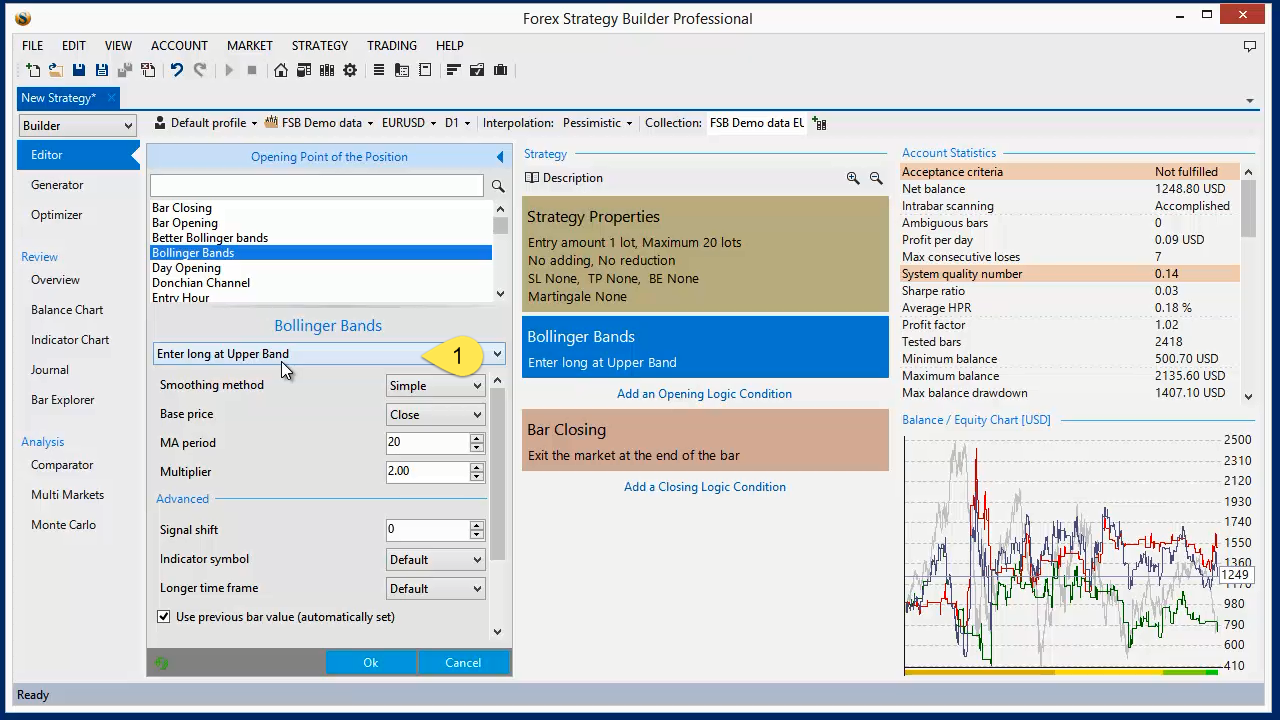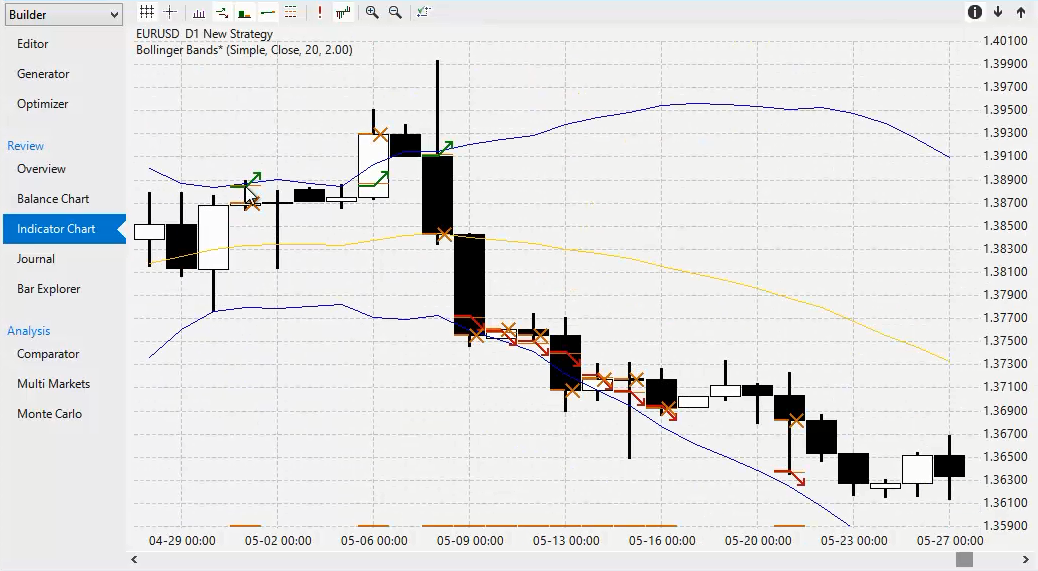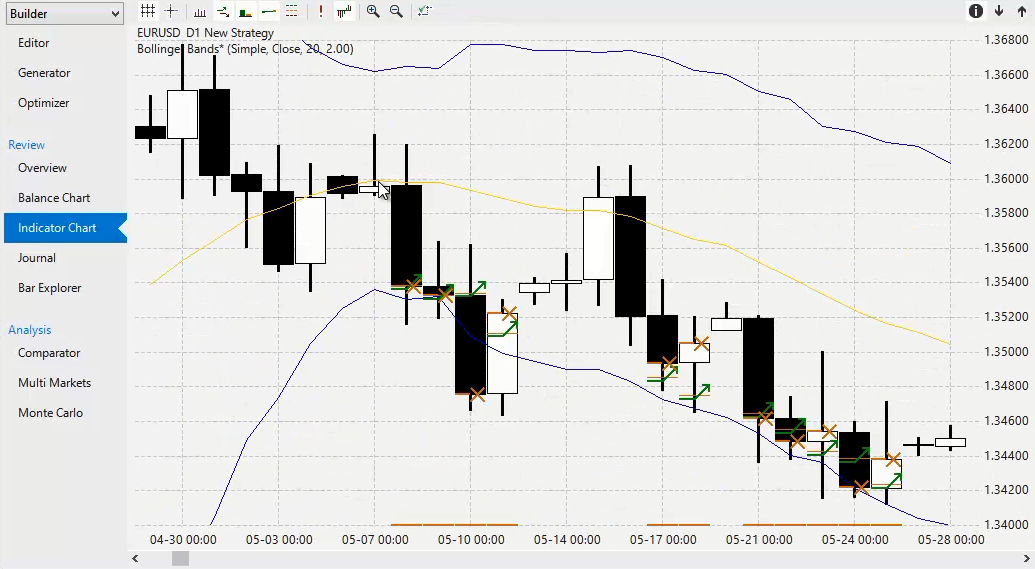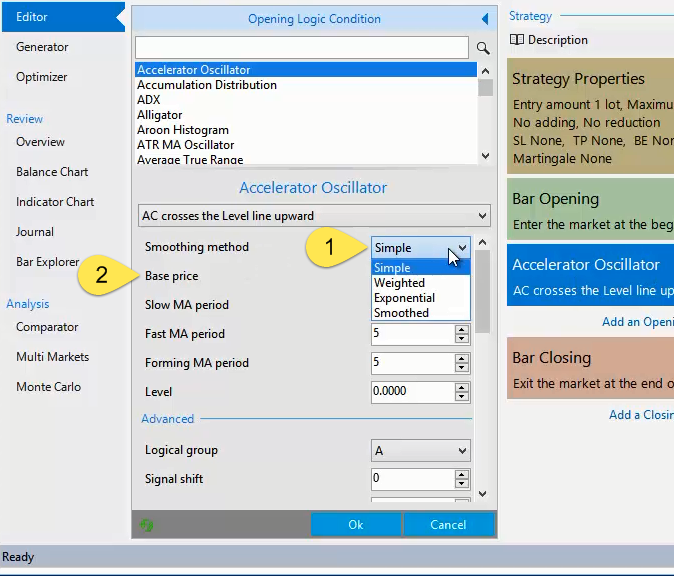User Guide
Startup
Strategy Structure
Main Tools
-
- Builder mode
- Trader mode
- Expert Advisor Trading
-
-
-
- Control Panel
- Trader
Create and Test Forex Strategies
To add an indicator click on a slot from the middle column of the screen. In a new strategy you would have a Opening Position Slot with a Bar Opening indicator selected in it. Clicking on each slot will open the Indicator Properties. To add an indicator simply choose it from the list at the top.
To choose an indicator you can use the simple search (6 on the picture). Then select the indicator with your mouse or press Enter. Choosing a different indicator will open its properties and populate the slot with it. Its values will be set to their defaults.
The list of indicators to choose from consists *only* of indicators that are suitable for the selected slot, so there is no risk that you add an unsuitable indicator in the wrong slot.
From marks 1 and 2 on the picture above you can see the type of slot that your indicator is being placed in. The tool tip pointed by mark 2 appears when you keep your cursor for a while above a strategy slot.
Every indicator has at least one logical application (See mark 1 on the picture above). Most indicators have several options.
 As you already know the Bollinger Bands indicator consists of a two lines that are “shifted” below and above the Moving Average. At mark 1 on the picture there are 2 options to select from. The first one is “Enter Long at Upper Band”, which means the program will open a long position at the upper line of Bollinger Bands indicator and a short position at the Lower Band.
This behavior can be seen on the picture below:
As you already know the Bollinger Bands indicator consists of a two lines that are “shifted” below and above the Moving Average. At mark 1 on the picture there are 2 options to select from. The first one is “Enter Long at Upper Band”, which means the program will open a long position at the upper line of Bollinger Bands indicator and a short position at the Lower Band.
This behavior can be seen on the picture below:

If we choose “Enter Long at Lower Band” instead, the program will open a long position when the price reaches the Lower Band and short positions when it reaches the Upper Band. (See below)

 Most indicators have a variety of options to let you customize them.
Most indicators have a variety of options to let you customize them.
Some indicators have parameters that are taken into account only when the selected logic requires them. For example let us take the Momentum indicator. It has the following application logic options:
However the Level parameter from the indicator properties will only work if we select logic that refers to the Level.
The picture above shows a case, where “Momentum changes its direction upward” is selected, so the Level parameter will not be used. You can enter any value and the line will not change.
~~DISQUS~~